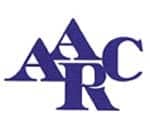Tomorrow’s technology
. The thrust of “Tomorrow’s Technology” (August 2003) was from the ICU area. However, there are many advances in other areas that the RT will have to focus on. For example, outpatient infection monitoring, advances in CPAP and BiPAP, home oxygen delivery, and respiratory condensate, among many others. In addition, many individuals believe that information systems will solve numerous shortcomings. However, these approaches also create another layer of difficulty and complexity. Education of the RT is essential if these are to work, and vendors must be held accountable for the hardware and software they provide. Further, vendors should give clients access to the raw data in an understandable format if possible to allow for troubleshooting and resolution of issues.
—Rick Carter
Chair, Department of Public Health, Georgia Southern University, Statesboro
Navigating the REM Landscape
.I was directed to the article by Jeffrey Wathen, “Titrating PAP During REM Sleep” (February/March 2003), by a post made at Binarysleep.com. Kudos to you for publishing this paper, and to Mr Wathen for writing it. The author has made a very sensible and understandable discussion of the REM landscape, and a rationale for the PSG tech to navigate it. It was a pleasure to “discover” your Web site this way. I have bookmarked it, and intend to visit regularly.
—Brian Athorp, CRT, RPSGT
Dedham, Me
 Peter Safar, “Father of CPR” Peter Safar, “Father of CPR”
Peter Safar, MD, the internationally renowned physician-researcher often called “the Father of CPR,” died of cancer on August 3, at his Mt Lebanon, Pa, home. He was 79. He is survived by his wife Eva and two sons, Philip and Paul. A third child, Elizabeth, died in 1966. A distinguished professor of resuscitation medicine at the University of Pittsburgh School of Medicine, Safar developed the first intensive care unit and paramedic ambulance service in the United States, and was nominated three times for the Nobel Prize in medicine. His research efforts and accomplishments in emergency medicine, critical care medicine, resuscitation research, and disaster re-animatology have saved many lives and gained international recognition. “Throughout his distinguished career, Peter Safar worked tirelessly and effectively to cheat death,” said University of Pittsburgh Chancellor Mark Nordenberg. “He fundamentally reshaped approaches to medical treatment and helped save hundreds of thousands of lives. His own life was characterized by intellectual power, uncompromising standards, and personal grace. He was one of a kind and will be sorely missed by his friends and colleagues, here and around the world.” “I don’t think a day went by that Peter didn’t do something good for mankind,” said Patrick Kochanek, MD, director of the Safar Center for Resuscitation Research at the University of Pittsburgh. Safar was born in 1924 in Vienna, Austria. After brief studies in pathology research, oncology, and surgery at the University of Vienna and Yale University, he received his anesthesiology training at the University of Pennsylvania. Safar was clinically active as an anesthesiologist for 39 years, until age 65. In 1979, at the age of 55, he stepped aside as department chairman and founded the International Resuscitation Research Center (IRRC) at the University of Pittsburgh, which he directed until 1994. In the 1950s, Safar documented, with experiments on human volunteers, cardiopulmonary resuscitation (CPR) step A and step B. He combined steps A and B with step C into basic life support (BLS). In 1961, Safar extended CPR into cardiopulmonary-cerebral resuscitation (CPCR), which he assembled as a sequence of nine steps of basic, advanced, and prolonged life support (BLS-ALS-PLS). He co-initiated modern life-supporting first aid (LSFA), resuscitation, and intensive (critical) care medicine (CCM). He created the first guidelines for community-wide emergency medical services (EMS). In the 1960s, Safar helped initiate the first guidelines on CPR, ambulance design and equipment, and emergency medical technician and paramedic training. In the 1970s, he began disaster reanimatology research. Starting in 1970, he established research programs into cerebral resuscitation from prolonged cardiac arrest. In 2003, the World Association for Disaster Medicine named its annual award in Peter Safar’s honor. |
Correction
In “Monitoring Patients During Infusion Therapy for Pain Control,” August 2003, an inaccurate measurement was given. The article stated that a new technology provides a “very short light path that reduces the sample size to 15 L, allowing accurate ETCO2 measurements using small volumes of exhaled gas at low flow rates.” The correct sample size should have been printed as 15 µL.









